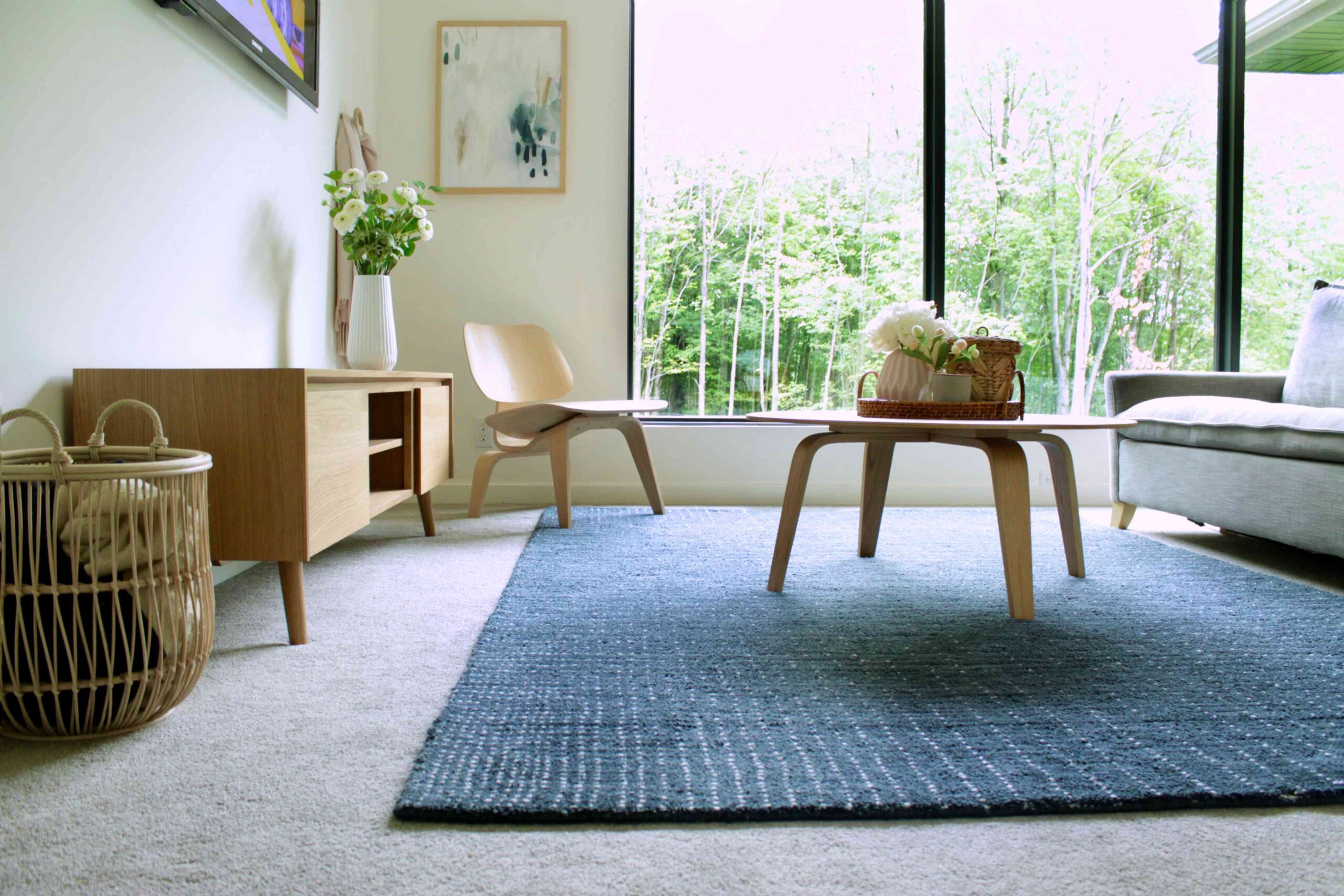
Anchoring Elegance: A Comprehensive Guide on Keeping Rugs in Place on Carpet
Introduction
Rugs are not only aesthetic additions to a room but also functional elements that provide comfort and warmth. However, keeping a rug in place on carpet can be a challenge, especially in high-traffic areas. The constant shifting and bunching can be frustrating. In this guide, we’ll explore various methods and solutions to ensure your rug stays securely anchored on your carpet, enhancing both safety and style in your living spaces.
The Challenge of Rug Slippage on Carpet
Carpeted floors present a unique challenge when it comes to keeping rugs in place. The smooth surface of the carpet can cause rugs to shift, creating tripping hazards and disrupting the overall look of the room. Fortunately, there are practical and creative solutions to address this common issue.
Preventive Measures and Solutions
1. Double-Sided Carpet Tape
Materials Needed:
- Double-sided carpet tape
Steps:
- Cut the double-sided carpet tape into strips.
- Flip the rug over.
- Apply the tape along the edges of the rug.
- Press the rug firmly onto the carpet, securing it in place.
2. Rug Gripper Pads
Materials Needed:
- Rug gripper pads
Steps:
- Place the rug gripper pads evenly across the back of the rug.
- Flip the rug over and position it on the carpet.
- Press down on the rug to ensure the gripper pads adhere to the carpet fibers.
3. Velcro Strips
Materials Needed:
- Velcro strips (hook and loop)
Steps:
- Attach one side of the Velcro strips to the back corners of the rug.
- Attach the corresponding side of the Velcro strips to the carpet.
- Press the rug onto the carpet, connecting the Velcro strips to secure it.
4. Non-Slip Rug Underlay
Materials Needed:
- Non-slip rug underlay
Steps:
- Cut the underlay to fit the dimensions of the rug.
- Place the underlay beneath the rug.
- Position the rug on the carpet, ensuring the underlay grips both surfaces.
5. Caulk or Silicone Beads
Materials Needed:
- Clear caulk or silicone beads
Steps:
- Apply clear caulk or create silicone bead lines on the back of the rug.
- Allow the caulk or silicone to dry completely.
- Place the rug on the carpet, pressing it down to secure the adhesion.
6. Furniture Weight Placement
Steps:
- Strategically place heavy furniture or decorative items along the edges of the rug.
- The weight of the furniture helps anchor the rug and prevents slipping.
7. Carpet Corners and Edges Tucking
Steps:
- Tuck the edges and corners of the rug under nearby furniture or along the edges of the carpet.
- This method works best with smaller rugs.
8. Rug-to-Rug Gripper
Materials Needed:
- Rug-to-rug gripper pad
Steps:
- Place a rug-to-rug gripper pad between the bottom rug and the carpet.
- Ensure the gripper pad covers a significant portion of the rug’s surface.
- Position the top rug on the gripper pad, securing both rugs in place.
9. DIY Fabric Velcro Strips
Materials Needed:
- Fabric strips
- Velcro strips
Steps:
- Attach one side of the Velcro strips to fabric strips.
- Sew or adhere the fabric strips to the back of the rug.
- Attach the corresponding Velcro strips to the carpet.
- Press the rug onto the carpet, connecting the Velcro strips.
10. Heavy-Duty Rug Underlay with Adhesive
Materials Needed:
- Heavy-duty rug underlay with adhesive backing
Steps:
- Cut the underlay to match the rug’s dimensions.
- Peel off the backing to expose the adhesive.
- Place the underlay on the carpet, sticky side up.
- Press the rug onto the underlay, ensuring a secure bond.
Frequently Asked Questions:
1. Will double-sided carpet tape damage my carpet?
High-quality double-sided carpet tape is designed to be safe for carpets. However, it’s essential to check the manufacturer’s instructions and choose a tape specifically formulated for this purpose.
2. Can rug gripper pads be reused on different rugs?
Rug gripper pads are often reusable and can be transferred to different rugs. Ensure they are clean and free of debris before reapplying.
3. Do Velcro strips work on all types of rugs and carpets?
Velcro strips can be effective on various rugs and carpets. However, they may not adhere well to certain textures or materials. Test a small area before applying to the entire rug.
4. How frequently should I replace non-slip rug underlay?
Non-slip rug underlay can last for a significant period. However, it may need replacement if it loses its grip or becomes damaged. Regularly check its condition to ensure optimal performance.
5. Can I use caulk or silicone beads on all types of rugs?
Clear caulk or silicone beads can be used on most rugs, but it’s essential to test a small, inconspicuous area first. Avoid applying directly to valuable or delicate rugs without ensuring compatibility.
6. Will heavy furniture damage my rug or carpet?
Placing heavy furniture strategically on the rug edges should not damage either the rug or the carpet. Ensure the furniture is stable and won’t cause any indentations.
7. Can I use the furniture weight placement method on larger rugs?
The furniture weight placement method is more effective for smaller rugs. For larger rugs, consider combining this method with other anchoring solutions for better stability.
8. How do I clean the rug if I use DIY fabric Velcro strips?
Remove the fabric Velcro strips before cleaning the rug. Follow the care instructions provided by the rug manufacturer to maintain its condition.
9. Can I cut the heavy-duty rug underlay to fit a specific shape?
Yes, you can cut the heavy-duty rug underlay to fit a specific shape. Use scissors or a utility knife to trim it according to the rug’s contours.
10. Do rug-to-rug gripper pads work for all rug sizes?
Rug-to-rug gripper pads are particularly effective for securing smaller rugs on top of larger ones. For larger rugs, additional anchoring methods may be needed.
Conclusion
Keeping a rug in place on carpet doesn’t have to be a constant struggle. With the variety of methods and solutions discussed in this guide, you can choose the one that best suits your preferences and rug type. Whether you opt for non-slip pads, adhesives, or the weight of strategically placed furniture, these techniques will help you maintain a tidy and secure living space. Experiment with different methods to find the perfect combination that not only anchors your rug but also enhances the overall aesthetic of your room.


